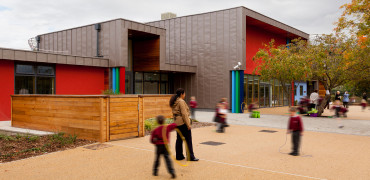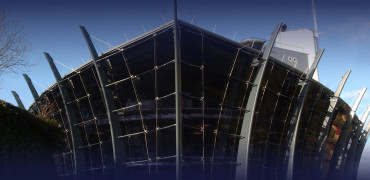I get a lot of case studies across my desk each month and invariably they are notable and worthy but this month I really wanted to focus on one because of the use of the building itself as well as the state-of-the-art technology being used.
Ronald McDonald House Charities offers vital support to families with a child in hospital, providing them with a comfortable place to stay that’s just a stone’s throw away from the hospital building.
The house at Guy’s and St Thomas’ in London was the very first facility of this type and since it opened in 1990 it has helped thousands of families stay close to their child during a hospital stay. In 2015 alone 325 families made use of this vital facility and avoided having to make long distance journeys from home or pay for costly hotel rooms.
The success of the house has expedited the need for the brand new 59-bedroom building at Evelina London Children’s Hospital - part of Guy’s and St Thomas’ NHS Foundation Trust. The new Lambeth Road accommodation takes the form of a four story residential block and will allow families to prepare their own meals and get a good night’s sleep, providing a home away from home and a degree of stability in an often distressing and uncertain time.
The 59-bedroom building for Ronald McDonald House Charities is utilising a water-based air conditioning system to provide comfortable accommodation to families in their hour of need.
The unique Hybrid VRF system removes the need for leak detection in occupied spaces because it uses water to transfer heating and cooling
Energy efficient heating and cooling
As part of this new build, project consultants Jones King identified the need for an energy efficient heating and cooling system and a regular supply of fresh air. VRF (Variable Refrigerant Flow) air conditioning was initially considered for the entire building but it was eventually decided that a Hybrid VRF system (HVRF) would be the best overall fit in the accommodation rooms.
The ground floor, designed as a communal area for resident families, is served by a City Multi VRF system and Lossnay Mechanical Ventilation with Heating Recovery (MVHR) units, whilst the first, second and third floors, accommodating individual residency rooms, benefit from a HVRF system. In total, 76 family rooms are served by the Hybrid solution.
Mitsubishi Electric’s HVRF system provides comfortable and stable air temperature control, without using refrigerant in occupied spaces. A truly integrated solution, this two-pipe solution offers simultaneous heating and cooling, flexible controls and high seasonal efficiency.
The unique Hybrid VRF system removes the need for leak detection in occupied spaces because it uses water to transfer heating and cooling between a special Hybrid Branch Controller (HBC)
However, in this case the developers have also included leak detection between the outdoor unit and the HBC, due to the extended pipe run connecting the two parts of the system.
On the ground floor, the Lossnay mechanical ventilation with heat recovery system provides energy efficient fresh air ventilation, improving air quality and comfort for residents. The Lossnay series of products use state-of-the-art heat exchange technology that enable CO2 reduction and energy saving. The newly installed Lossnay system extracts stale air from the Lambeth Road property, recovering heat energy through its paper core and transferring it into the fresh incoming air.
No modern heating and cooling solution is complete without the right controls to ensure that the system can be monitored and adjusted with the minimum of fuss.
The new charity house incorporates a touch screen centralised controller, capable of controlling up to 50 units and providing detailed analysis on energy consumption. In addition, individual wall mounted room controllers enable guest families to alter the temperature in their rooms.
Sugoi Solutions - a Mitsubishi Electric accredited installer - carried out the installation and director Ben May made sure that everything went according to plan. He comments, “During the final design stage of the project it became apparent to Sugoi that leak detection would be required due to the refrigerant pipe work distances. Leak detection was an element that hadn’t been included within the project budget and therefore created a problem for all concerned.
“The selection and installation of the Hybrid VRF system removed the need for leak detection and kept the project within original cost plans.”
With the new systems in place the house is now ready to accept its first guests, providing them with a warm and peaceful environment away from the stresses of the hospital ward.
Tony Prior is the editor of Refurb Projects which features news and reports on the latest developments, products and technologies that are helping to improve our built environment.
If you have any questions about this article, you can contact us via email. Or if you would like to tweet us, please follow our MEUK_LES twitter page.
We upload new articles every week so remember to check back regularly.
You can also sign up for our monthly newsletter below.


